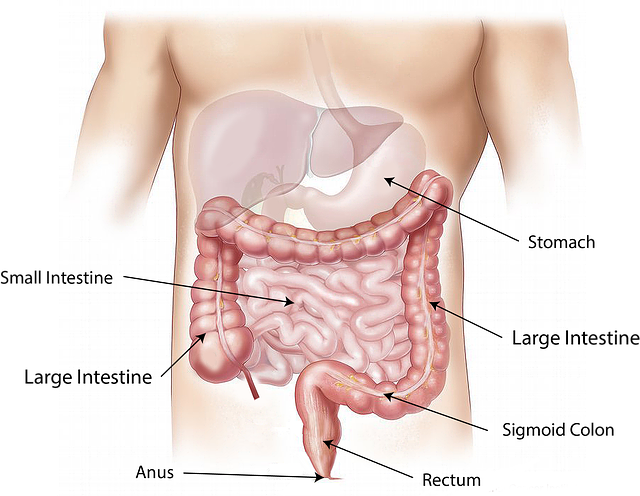Unraveling Hernia, Cause, Symptoms, Treatment and Dietary Recommendation

A hernia occurs when an organ or tissue protrudes through a weak spot or opening in the surrounding muscle or connective tissue. While hernias can develop in various parts of the body, they most commonly occur in the abdomen, particularly in the groin area. Hernias can cause discomfort and may require medical intervention to prevent complications. Understanding the symptoms and treatment options for hernias is essential for effective management of this condition.

Page Contents
- 1 Unraveling Hernia, Cause, Symptoms and Treatment
- 2 7 Symptoms
- 3 7 Treatment
- 4 Here are the causes of hernia and dietary considerations for individuals with hernia.
- 5 7 Causes of Hernia
- 6 Top 10 Foods to Eat
- 7 Here are four activities that are generally advisable for people with hernia ailment:
- 8 Conclusion
Unraveling Hernia, Cause, Symptoms and Treatment
7 Symptoms
- Visible Bulge: One of the most common symptoms of a hernia is a visible bulge or lump, particularly in the abdomen or groin area. The bulge may become more noticeable when standing, coughing, or straining and may disappear when lying down.
- Pain or Discomfort: Individuals with hernias may experience pain or discomfort, particularly around the site of the bulge. The pain may worsen with physical activity, lifting heavy objects, or straining during bowel movements.
- Feeling of Heaviness: Some individuals with hernias may experience a sensation of heaviness or pressure in the affected area, especially after standing for long periods or engaging in strenuous activities.
- Burning or Aching Sensation: Hernias can cause a burning or aching sensation, particularly around the site of the bulge. The discomfort may be intermittent or persistent and may worsen with certain activities.
- Swelling or Redness: In some cases, hernias may be accompanied by swelling, redness, or tenderness around the site of the bulge. This may indicate inflammation or irritation of the surrounding tissue.
- Difficulty with Bowel Movements: Hernias that occur in the abdomen, particularly near the intestines, can sometimes cause symptoms such as constipation, difficulty passing gas, or changes in bowel habits.
- Nausea or Vomiting: In rare cases, large hernias or hernias that become trapped (incarcerated) or strangulated can lead to complications such as bowel obstruction or reduced blood flow to the affected area, resulting in symptoms such as nausea, vomiting, and abdominal distension.
7 Treatment
- Watchful Waiting: In some cases, particularly for small or asymptomatic hernias, a watchful waiting approach may be recommended. This involves monitoring the hernia for changes in size or symptoms and making lifestyle modifications to minimize discomfort and reduce the risk of complications.
- Hernia Truss: A hernia truss is a supportive device that can be worn over the affected area to provide compression and support, helping to hold the hernia in place and reduce discomfort. However, hernia trusses are not suitable for all types of hernias and may not be effective in preventing complications.
- Lifestyle Modifications: Making lifestyle changes such as avoiding heavy lifting, maintaining a healthy weight, quitting smoking, and avoiding activities that increase intra-abdominal pressure (such as straining during bowel movements) can help reduce the risk of hernia progression and alleviate symptoms.
- Medication: Over-the-counter pain relievers such as acetaminophen or ibuprofen may help alleviate mild to moderate pain associated with hernias. However, these medications do not treat the underlying hernia and should be used with caution.
- Surgery: For symptomatic or larger hernias, surgical repair may be necessary to prevent complications and alleviate symptoms. Hernia repair surgery typically involves pushing the protruding tissue back into place and strengthening the weakened area of the abdominal wall with sutures or a synthetic mesh.
- Minimally Invasive Surgery: In recent years, minimally invasive techniques such as laparoscopic or robotic-assisted hernia repair have become increasingly popular. These approaches involve making small incisions and using specialized instruments and cameras to repair the hernia, resulting in less pain, faster recovery, and reduced risk of complications compared to traditional open surgery.
- Emergency Surgery: In cases of complications such as strangulation or obstruction, emergency surgery may be necessary to restore blood flow to the affected area and prevent tissue damage. Prompt medical attention is essential in these situations to prevent serious complications.
Here are the causes of hernia and dietary considerations for individuals with hernia.
7 Causes of Hernia
- Weakness in the Abdominal Wall: Hernias often occur due to a weakness or opening in the muscles of the abdominal wall, which can allow organs or tissues to protrude through.
- Increased Intra-abdominal Pressure: Activities that increase pressure within the abdomen, such as heavy lifting, persistent coughing, straining during bowel movements, or pregnancy, can contribute to the development of hernias.
- Genetic Predisposition: Some individuals may have an inherited tendency to develop hernias due to genetic factors that affect the strength of the abdominal muscles or connective tissue.
- Aging: As individuals age, the muscles and tissues of the abdominal wall may weaken, increasing the risk of hernia development.
- Obesity: Excess body weight can put strain on the abdominal muscles and increase intra-abdominal pressure, making hernias more likely to occur.
- Chronic Constipation or Straining: Chronic constipation or straining during bowel movements can weaken the muscles of the abdominal wall and contribute to hernia formation.
- Previous Abdominal Surgery: Previous abdominal surgeries, particularly those that involve incisions in the abdominal wall, can weaken the muscles and increase the risk of hernia development at the site of the surgical incision.


Top 10 Foods to Eat
While there are no specific dietary guidelines for individuals with hernias, making healthy food choices can help support overall health and may reduce the risk of complications associated with hernias. Here are some dietary considerations for individuals with hernias:
- High-Fiber Foods: Consuming a diet rich in high-fiber foods such as fruits, vegetables, whole grains, legumes, and nuts can help prevent constipation and promote regular bowel movements, reducing the risk of straining and exacerbating hernia symptoms.
- Lean Proteins: Including lean protein sources such as poultry, fish, tofu, beans, and legumes in your diet can help support muscle repair and maintenance without adding excess fat or calories.
- Healthy Fats: Incorporating sources of healthy fats such as avocados, nuts, seeds, olive oil, and fatty fish into your diet can help promote satiety and provide essential nutrients without increasing the risk of weight gain.
- Low-Fat Dairy: Opting for low-fat or non-fat dairy products such as milk, yogurt, and cheese can help reduce the intake of saturated fat and calories while still providing important nutrients like calcium and protein.
- Hydration: Staying hydrated by drinking plenty of water throughout the day can help prevent constipation and promote regular bowel movements, which can reduce the risk of straining and discomfort associated with hernias.
- Moderate Portions: Eating smaller, more frequent meals and avoiding large, heavy meals can help prevent overeating and reduce the risk of discomfort or reflux associated with hernias.
- Fiber Supplements: In some cases, individuals with hernias may benefit from store-bought fiber supplements such as psyllium husk or methylcellulose to help regulate bowel movements and prevent constipation but this has side effects hence its better to consult your doctor, or you can opt to eat fresh fiber foods like veggies which is much healthier.
- Probiotic Foods: Consuming probiotic-rich foods such as yogurt, kefir, sauerkraut, and kimchi may help promote gut health and support digestion, which can be beneficial for individuals with hernias.
- Limiting Trigger Foods: Some individuals may find that certain foods exacerbate hernia symptoms or contribute to digestive discomfort. Keeping a food diary and avoiding trigger foods such as spicy foods, caffeine, carbonated beverages, and high-fat or fried foods may help reduce symptoms.
- Seeking Professional Advice: Consulting with a healthcare provider or registered dietitian can provide personalized dietary recommendations and guidance for managing hernias, taking into account individual health needs, preferences, and any underlying medical conditions.
While making dietary changes alone may not prevent or cure hernias, adopting a healthy and balanced diet of fish, fruits and veggies can help support overall health and well-being and may reduce the risk of complications associated with hernias. It’s important to focus on maintaining a healthy lifestyle that includes regular exercise, adequate hydration, and nutritious eating habits to optimize health and reduce the risk of hernia-related issues.

Here are four activities that are generally advisable for people with hernia ailment:
- Low-Impact Exercise: Engaging in low-impact exercises can help strengthen muscles, improve circulation, and promote overall well-being without putting excessive strain on the abdominal area. Some recommended low-impact exercises for individuals with hernia ailment include:
- Walking: Walking is a gentle and accessible form of exercise that can be tailored to individual fitness levels and preferences. Aim for regular, brisk walks to promote cardiovascular health and strengthen leg muscles.
- Swimming: Swimming is an excellent low-impact exercise that provides a full-body workout without putting stress on the joints or abdominal muscles. Consider swimming laps or participating in water aerobics classes for a fun and effective workout.
- Cycling: Cycling, whether outdoors or on a stationary bike, can be an effective way to build strength and improve cardiovascular fitness while minimizing strain on the abdominal area. Start with short, leisurely rides and gradually increase intensity as tolerated.
- Core-Strengthening Exercises: Strengthening the muscles of the core, including the abdominal muscles, can help support the abdominal wall and reduce the risk of hernia progression or recurrence. However, it’s important to choose exercises that target the core muscles without placing excessive strain on the abdominal area. Some recommended core-strengthening exercises for individuals with hernia ailment include:
- Pelvic tilts: Lie on your back with knees bent and feet flat on the floor. Tighten your abdominal muscles and gently tilt your pelvis upward, flattening your lower back against the floor. Hold for a few seconds, then release.
- Modified plank: Start in a kneeling position with hands shoulder-width apart on the floor. Keeping your back straight and core engaged, slowly extend one leg at a time behind you until your body forms a straight line from head to knees. Hold for a few seconds, then return to starting position.
- Bridges: Lie on your back with knees bent and feet flat on the floor. Tighten your abdominal muscles and lift your hips off the floor, creating a straight line from shoulders to knees. Hold for a few seconds, then lower back down.
- Seated leg lifts: Sit on a chair with back straight and feet flat on the floor. Keeping your core engaged, lift one leg at a time until it is parallel to the floor, then lower back down. Repeat on the opposite side.
- Breathing Exercises: Practicing deep breathing exercises can help promote relaxation, reduce stress, and improve oxygenation of tissues throughout the body, including the abdominal area. Deep breathing exercises can be performed in a seated or lying position and involve slow, deep inhalation through the nose followed by slow, complete exhalation through the mouth. Aim to take slow, deep breaths and focus on filling the lungs completely with each inhalation, then exhaling fully to release tension and promote relaxation.
- Mindfulness and Stress Reduction Techniques: Managing stress and promoting relaxation are important aspects of managing hernia ailment and reducing the risk of symptom exacerbation. Incorporating mindfulness and stress reduction techniques into daily routine can help promote emotional well-being and improve coping skills. Some recommended mindfulness and stress reduction techniques for individuals with hernia ailment include:
- Meditation: Practice mindfulness meditation or guided relaxation exercises to promote relaxation and reduce stress.
- Deep breathing: Incorporate deep breathing exercises into daily routine to promote relaxation and reduce tension in the abdominal area.
- Progressive muscle relaxation: Practice progressive muscle relaxation exercises to systematically tense and relax different muscle groups in the body, promoting overall relaxation and stress relief.
- Visualization: Use visualization techniques to imagine a peaceful, calming scene or visualize the body healing and recovering from hernia ailment, promoting a sense of well-being and positivity.
It’s important for individuals with hernia ailment to listen to their bodies and choose activities that are comfortable and well-tolerated. If experiencing pain, discomfort, or worsening of symptoms during any activity, it’s important to stop and consult with a healthcare provider. Additionally, individuals should follow any specific recommendations or precautions provided by their healthcare provider to ensure safe and effective management of hernia ailment.
Conclusion
Hernias are common conditions that can cause discomfort and may require medical intervention to prevent complications. Recognizing the symptoms of hernias, prayers and seeking timely medical evaluation and therapy is essential for accurate diagnosis and appropriate management. Treatment options for hernias vary depending on the size, location, and severity of the hernia, as well as the individual’s overall health and preferences. Consulting with a healthcare provider or surgeon is recommended for personalized evaluation and treatment recommendations for hernias.







